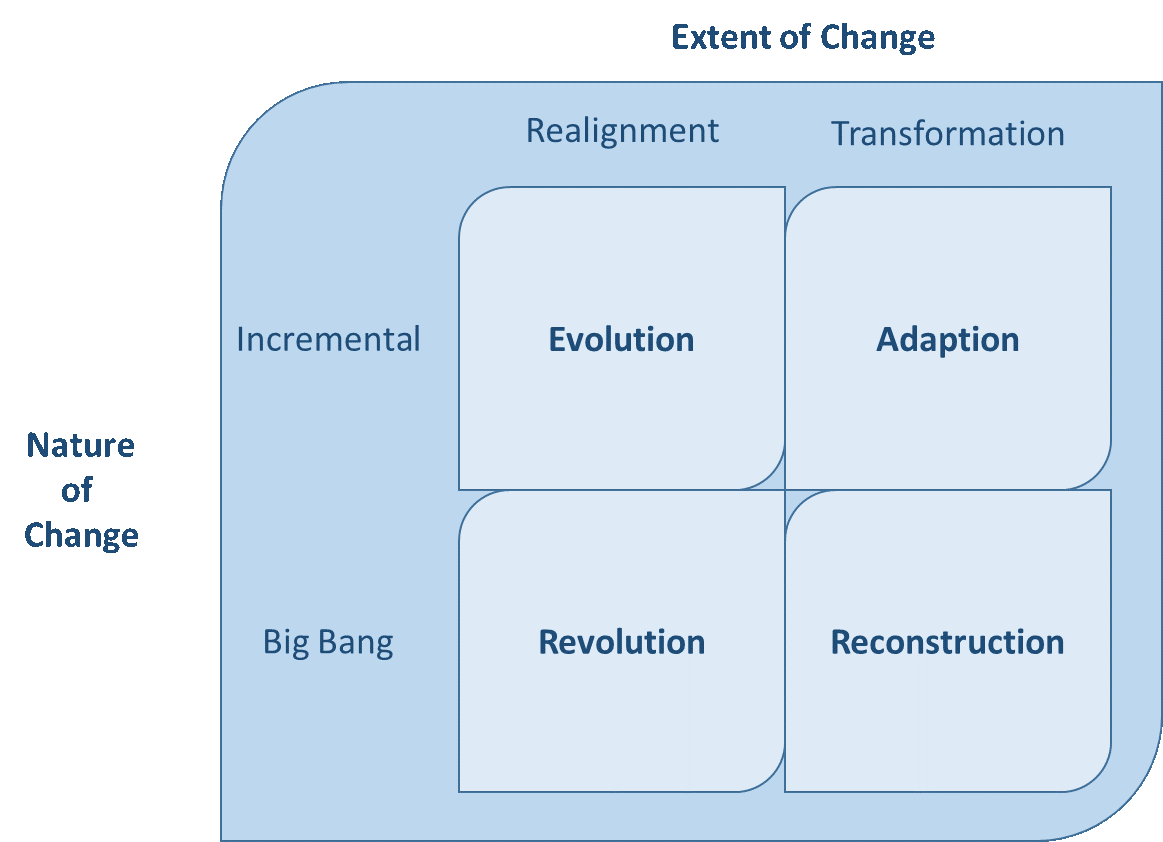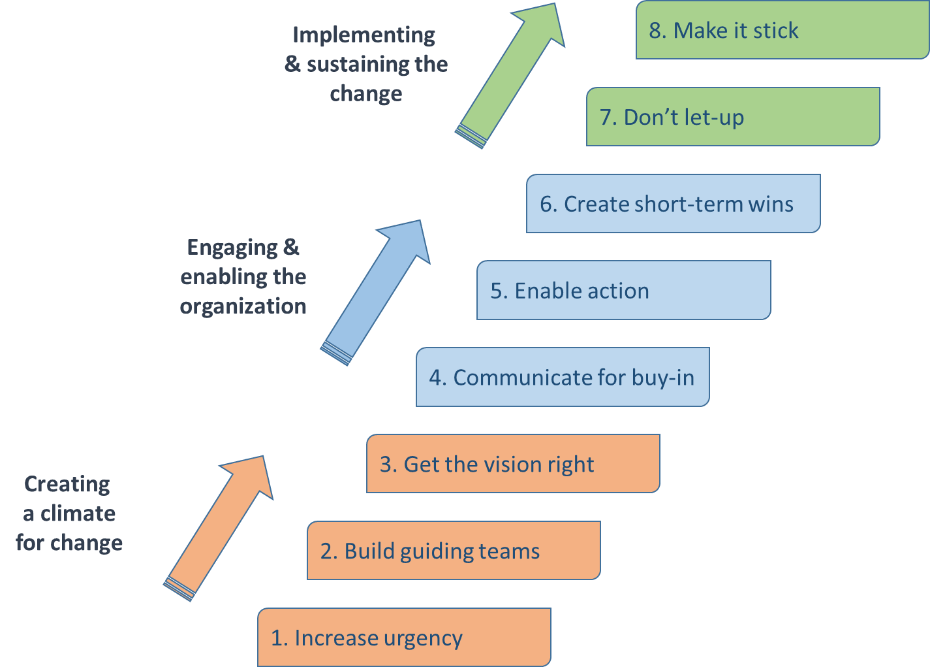What Drives Organizational Change?
First of all, I want to examine the different types of strategic change an organization can face before identifying frameworks for implementing change.
Balogun and Hope-Hailey’s model (2008) outlines four different classifications of change that map the extent and the nature (or speed) of required changes (Figure 1).
The strength of their model lies in its recognition of the complexity of change and the need for context-sensitive designs. This flexibility allows the framework to adapt to different contexts, ensuring the most effective approach for each situation.
Types of Strategic Change in Organizations
An organization’s vision can drive the company’s strategy. The focus for change should be aligning the management culture with this strategy.
Based on the different types of strategic change, an Evolution or Adaptation approach is appropriate for many organizations.

Evolution
A gradual, transformational change through inter-related initiatives. It focuses on cultural change accomplished over time.
Adaptation
Change that realigns the way in which the organization operates and is implemented in a series of steps. It can be accommodated within the existing culture and can occur incrementally.
Revolution
Transformational change occurs via simultaneous initiatives on many fronts. It is more likely to be forced and reactive and involves fundamental changes in strategy and culture.
Reconstruction
Change realigns operations with many initiatives implemented simultaneously. It involves rapid change but without fundamentally changing the culture.
How Do Organizations Implement Change?
After identifying the type of change, the next is to identify a framework for implementing this change effectively. John Kotter (2012) examined companies with traditional hierarchies and processes optimized for day-to-day business but cannot handle the challenges of strategic change.
Kotter proposes an 8-step process to help organizations avoid failure and improve their ability to adapt. He emphasizes that “by improving their ability to change, organizations can increase their chances of success, both today and in the future. Without this ability to adapt continuously, organizations cannot thrive”.
Kotter’s model is valuable because the steps for leading are clear and easy to follow. It focuses on gaining employee buy-in as the focus for success. The 8 steps are as follows:
1. Create a Sense of Urgency
This urgency starts at the top of the organization, and the management team needs to acknowledge and reinforce the message to their staff.
2. Build a Guiding Coalition
The core of this strategy is the guiding teams, led by the management team. They maintain the message for the opportunity and identify key members of their staff to support the message.
3. Form a Strategic Vision
Develop change management initiatives around the company’s vision to capitalize on the opportunity for successful growth. This enables everyone in the organization to contribute to the opportunity.
4. Communicate the Vision to Create Buy-In
If done correctly and perhaps with creativity, such communications will attract employees to buy into the ambition of the opportunity and share their commitment to it.
5. Accelerate Movement and Enable Action
Accelerate movement towards the need for change by enabling the team to work together on the vision and removing any barriers blocking the opportunity.
6. Celebrate Short-Term Wins
The strategy won’t last long without confirmation that its decisions and actions are actually benefiting the organization. Celebrating short-term wins will demonstrate proof of the strategy to skeptics.
7. Sustain Acceleration
Maintain the urgency and keep learning as you go along. Continue to carry through on change initiatives while creating new ones to adapt to shifting business environments.
8. Make it Stick
No strategic initiative, big or small, is complete until it has been incorporated into day-to-day activities and institutionalized into the company culture.

Figure 2 – Framework for Implementing Change
How Do Effective Leaders Approach Change?
Traditional approaches may not be effective for driving organizational change. Business leaders need to adopt new strategies to introduce organizational change and enable their teams to adapt.
It is possible that as change leaders, you will have to adopt these three leadership approaches to bring successful change:
Agitator
Often known as the disruptor that suggests change as the essential path to growth and acknowledges any grievances or resistance in the way of that change.
Innovator
The Innovator is the one who creates a plan and suggests the next steps to address the grievances brought by the Agitator.
Orchestrator
These change leaders orchestrate the road map to change. They coordinate between teams, departments, and hierarchies to move the action plan of the innovator to make the change a reality.
As organizations pursue effective leadership, leaders must strengthen their project leadership skills to sustain change.
Get the Collaborative Project Management Handbook
Improve your leadership, collaboration, and project management skills with “Collaborative Project Management: A Handbook” written by Éamonn McGuinness.

